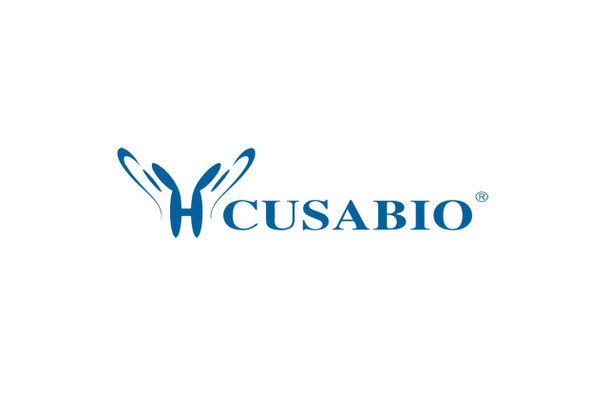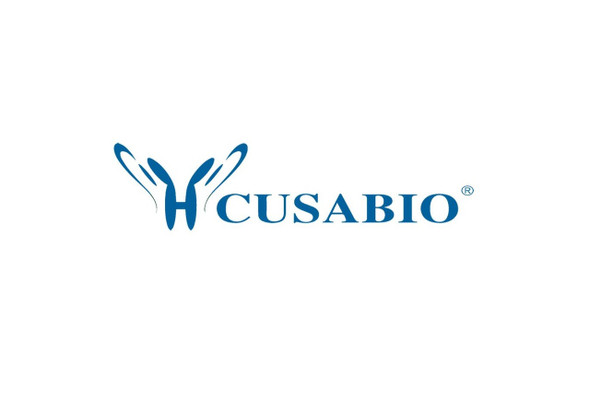Cusabio Rotavirus A Recombinants
Recombinan Rotavirus A Non-structural glycoprotein 4, partial | CSB-CF889507RFU
- SKU:
- CSB-CF889507RFU
- Availability:
- 18 - 23 Working Days
Description
Recombinan Rotavirus A Non-structural glycoprotein 4, partial | CSB-CF889507RFU | Cusabio
Alternative Name(s): NCVP5 NS28
Gene Names: N/A
Research Areas: Others
Organism: Rotavirus A (isolate RVA/Cow/United States/B223/1983/G10P8[11 ]) (RV-A)
AA Sequence: PTMKIALKTSKCSYKVVKYCIVTIFNTLLKLAGYKEQITTKDEIEKQMERVVKEMRRHFKMIDKLTTREIEQVGLLKRIHDKLDIRAVDEIDMTKEINQKNVRTLEEWEWGKNPYEPKEVTAAM
Source: in vitro E.coli expression system
Tag Info: N-terminal 6xHis-tagged and C-terminal Myc-tagged
Expression Region: 52-175aa
Sequence Info: Cytoplasmic Domain
MW: 21.7 kDa
Purity: Greater than 85% as determined by SDS-PAGE.
Relevance: Involved in virus morphogenesis. Functions as a receptor for the immature double-layered inner capsid particle (ICP) which transiently buds into the lumen of the rough endoplasmic reticulum during viral maturation Enterotoxin that causes a phospholipase C-dependent elevation of the intracellular calcium concentration in host intestinal mucosa cells. Increased concentration of intracellular calcium disrupts the cytoskeleton and the tight junctions, raising the paracellular permeability. Potentiates chloride ion secretion through a calcium ion-dependent signaling pathway, inducing age-dependent diarrhea. To perform this enterotoxigenic role in vivo, NSP4 is probably released from infected enterocytes in a soluble form capable of diffusing within the intestinal lumen and interacting with the plasma membrane receptors on neighboring epithelial cells. Possible receptors for NSP4 are alpha-1/beta-1 and alpha-2/beta-1 integrin heterodimers
Reference: "Species specificity and interspecies relatedness of NSP4 genetic groups by comparative NSP4 sequence analyses of animal rotaviruses." Ciarlet M., Liprandi F., Conner M.E., Estes M.K. Arch. Virol. 145:371-383(2000)
Storage: The shelf life is related to many factors, storage state, buffer ingredients, storage temperature and the stability of the protein itself. Generally, the shelf life of liquid form is 6 months at -20?/-80?. The shelf life of lyophilized form is 12 months at -20?/-80?.
Notes: Repeated freezing and thawing is not recommended. Store working aliquots at 4? for up to one week.
Function: Involved in virus morphogenesis. Functions as a receptor for the immature double-layered inner capsid particle (ICP) which transiently buds into the lumen of the rough endoplasmic reticulum during viral maturation (By similarity).
Involvement in disease:
Subcellular Location: Non-structural glycoprotein 4: Host rough endoplasmic reticulum membrane, Single-pass type III membrane protein, Host membrane, host caveola, Single-pass type III membrane protein, Secreted
Protein Families: Rotavirus NSP4 family
Tissue Specificity:
Paythway:
Form: Liquid or Lyophilized powder
Buffer: If the delivery form is liquid, the default storage buffer is Tris/PBS-based buffer, 5%-50% glycerol. If the delivery form is lyophilized powder, the buffer before lyophilization is Tris/PBS-based buffer, 6% Trehalose, pH 8.0.
Reconstitution: We recommend that this vial be briefly centrifuged prior to opening to bring the contents to the bottom. Please reconstitute protein in deionized sterile water to a concentration of 0.1-1.0 mg/mL.We recommend to add 5-50% of glycerol (final concentration) and aliquot for long-term storage at -20?/-80?. Our default final concentration of glycerol is 50%. Customers could use it as reference.
Uniprot ID: Q9PYC8
HGNC Database Link: N/A
UniGene Database Link: N/A
KEGG Database Link: N/A
STRING Database Link: N/A
OMIM Database Link: N/A









